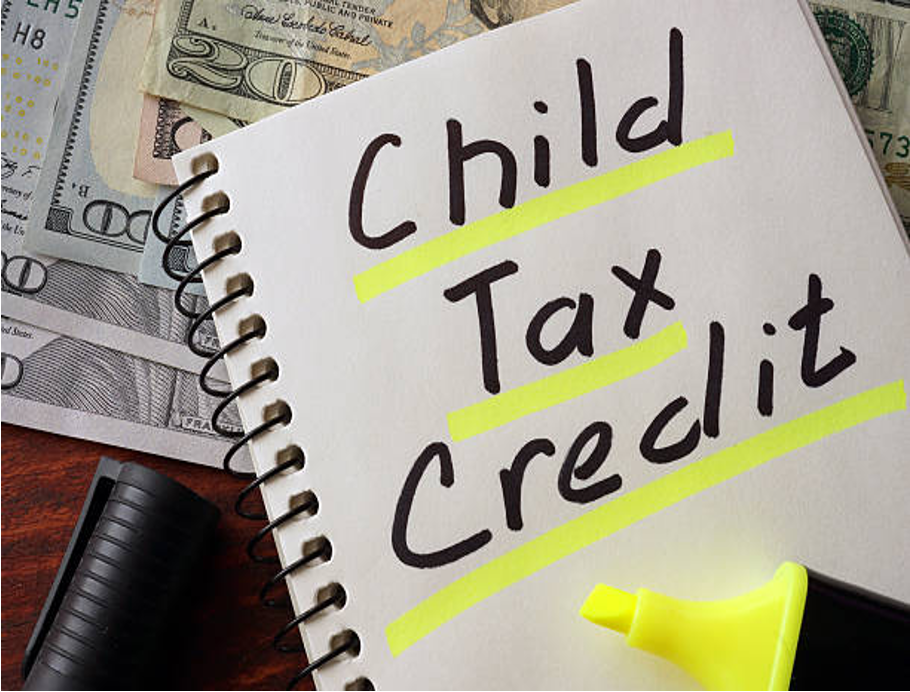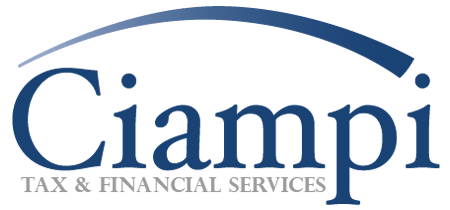With nature’s signs that autumn is upon us, we wish a happy fall to our clients! And during this time of change, Ciampi Tax is transforming as well. We are excited to preview our new and revitalized Ciampi Tax identity, which visually speaks to our evolution, progress and growth. We are thrilled to share this with you. Please watch for more changes coming soon.
Even though tax filing season is months away, now is a good time to start planning. Proper planning requires awareness of new tax laws and what existing tax laws have changed – and there are plenty of tax law changes and updates for the 2022.
In This Issue:
In this Issue:
- Child Tax Credit
- Child & Dependent Tax Credit
- Capital Gains Tax Rate
- Issuance of 1099K with 3rd Party Payment
- Residential Tax Credit
- Standard Mileage Rate
- Tax Extenders
- Audits and IRS Staffing Increase
- Student Loan Repayment
Child Tax Credit
The Inflation Reduction Act, passed in August 2022, added a new twist to things. Please watch for our newsletters, as we will communicate additional changes that will happen post-midterm election season around this Act. In the meantime, here are a number of tax areas to be updated on: Child Tax Credit
The child tax credit reverts to its pre-2021 form for the 2022 tax year. It drops back down to $2,000 per child (from $3,000 for children ages 6 -17 years and $3,600 for children ages 5 years and younger).
Also, the previous age limit of 16 years returns, so children aged 17 years do not qualify for the credit anymore. For families to gain the full tax credit at tax time, their earnings need to be below a certain threshold.
| Filing Status | 2022 |
| Married Filing Jointly | >$150,000.00 |
| Head of Household | >$112,500.00 |
Child and Dependent Tax Credit
For 2022, the child and dependent care credit is non-refundable. The maximum credit percentage also drops from 50% to 35%. Fewer care expenses are eligible for the credit, as well.
The credit will only be allowed for up to $3,000 in expenses for one child/dependent and $6,000 for more than one child/dependent. In addition, the full child and dependent care credit will only be allowed for families making less than $15,000 a year in 2022 (instead of $125,000 per year). After that, the credit starts to phase-out.

Capital Gains Tax Rate
Tax rates on long-term capital gains (i.e., gains from the sale of capital assets held for at least one year) and qualified dividends did not change for 2022. However, the income thresholds to qualify for the various rates were adjusted for inflation.
In 2022, the 0% rate applies for individual taxpayers with taxable income up to $41,675 on single returns ($40,400 for 2021), $55,800 for head-of-household filers ($54,100 for 2021) and $83,350 for joint returns ($80,800 for 2021).
The 20% rate for 2022 starts at $459,751 for singles ($445,851 for 2021), $488,501 for heads of household ($473,751 for 2021) and $517,201 for couples filing jointly ($501,601 for 2021).
The 15% rate is for filers with taxable incomes between the 0% and 20% break points.
The 3.8% surtax on net investment income stays the same for 2022. It kicks in for single people with modified AGI over $200,000 and for joint filers with modified AGI over $250,000.
Issuance of Form 1099-K – Venmo, PayPal
Starting with the 2022 tax year, third-party payment settlement networks (i.e., PayPal and Venmo) will send you a Form 1099-K if you are paid over $600 during the year for goods or services, regardless of the number of transactions. Previously, the form was only sent if you received over $20,000 in gross payments and participated in more than 200 transactions. The gross amount of a payment doesn’t include any adjustments for credits, cash equivalents, discount amounts, fees, refunded amounts, or any other amounts.
This change to the reporting threshold means more people than ever will get a Form 1099-K next year. However, remember that 1099-K reporting is only for money received for goods and services. It doesn’t apply to payments from family and friends.

Residential Tax Credit
The recent Inflation Reduction Act renamed the former Residential Energy Efficient Property Credit to the Residential Clean Energy Credit. But, more importantly, the credit amount was increased starting with the 2022 tax year.
Before the Inflation Reduction Act, the credit was generally worth 26% of the cost to install qualifying electric, water heating, or temperature control systems for your home that use solar, wind, geothermal, biomass, or fuel cell power. The credit percentage was also scheduled to drop to 23% in 2023 and then expire in 2024.
Now, the credit is increased to 30% starting in 2022. It eventually drops to 26% for 2033 and 22% for 2034, before the credit expires in 2035. However, it no longer applies to biomass furnaces and water heaters. Starting in 2023, the credit will apply to battery storage technology with a capacity of at least three kilowatt hours.
Standard Mileage Rate
Due to elevated gas prices, the IRS took the unusual step of adjusting the standard mileage rates for 2022 in the middle of the year. Therefore, the rates applicable during the first half of the year are different from the rates used for the second half.
The mileage rates are used to calculate tax deductions for the use of an automobile (i.e., a car, pickup truck, or van) for business purposes, medical-related travel, and moving expenses for active-duty members of the military.
2022 IRS Mileage Rates
| January 1 – June 30 | July 1 – December 31 | |
| Business | 58.5 cents | 62.5 cents |
| Medical | 18.0 cents | 22.0 cents |
Tax Extenders
The recent Inflation Reduction Act extended two tax breaks available to individuals for 2022 – the Nonbusiness Energy Property Credit and the Alternative Fuel Vehicle Refueling Property Credit.
Congress has not yet passed legislation to renew other “tax extender” deductions and credits that expired at the end of 2021. The tax breaks that expired last year that impact individual taxpayers are:
- Mortgage insurance premiums deduction
- Fuel cell motor vehicle credit
- Two-wheeled plug-in electric vehicle credit
Audits and IRS Staffing Increase
Under the Inflation Reduction Act, the IRS is authorized to hire 86,000 new agents. To the average taxpayer, this may lead to stricter compliance efforts, more notices, and aggressive collections by the Internal Revenue Service.
The purpose is to boost tax collections through increased audits and other enforcement actions. The expanded funding begins immediately.
Nevertheless, this increase in IRS agents will help keep up with the growing workforce and help the IRS catch up with their significant backlog of processing returns and resolving correspondence issues.
If you are worried that you’ll fall into the less than 1% of taxpayers who are audited, be sure to avoid common mistakes the IRS is likely to flag.
Examples include:
- Numbers in your return not matching documents submitted by other payers
- Mismatched tax ID numbers
- Income sources not matching
- Overestimating the value of property donated to charity
- Reporting unusually large deductions (i.e., business expenses) compared with previous years
- Consistently claiming losses from a business activity, the IRS views as a hobby
Overall, there will be stricter compliance efforts on behalf of the Internal Revenue Service which will yield more notices, requests for supporting documentation and correspondence audits on individual returns.

Student Loan Repayment
“President Biden believes that a post-high school education should be a ticket to a middle-class life, but for too many, the cost of borrowing for college is a lifelong burden that deprives them of that opportunity.” It’s expected that the administration will stick with that promise, forgiving $10,000 of federal student loan debt for borrowers who make $125,000 or less annually.
While the Student Loan repayment period has been delayed again, now until December 31, 2022, people should be prepared to begin to pay back the loans in January 2023.
For the long term in loan repayment, this proposal offers:
- For undergraduate loans, cut in half the amount that borrowers have to pay each month from 10% to 5% of discretionary income.
- Raise the amount of income that is considered non-discretionary income and therefore is protect from repayment. This guarantees that no borrower earning under 225% of the federal poverty level—about the annual equivalent of a $15 minimum wage for a single borrower—will have to make a monthly payment.
- Forgive loan balances after 10 years of payments, instead of 20 years, for borrowers with original loan balances of $12,000 or less. The Department of Education estimates that this will allow all community college borrowers to be debt-free within 10 years.
- Cover the borrower’s unpaid monthly interest, so that no borrower’s loan balance will grow as long as they make their monthly payments—even when that monthly payment is $0 because their income is low.
Overall, undergraduate and graduate federal loans and are all eligible. Biden’s plan only applies to federal student loans, and not private student loans. Applicants should apply before November 15th to ensure all is forgiven prior to the ending of the payment pause on federal loans on December 31st.



